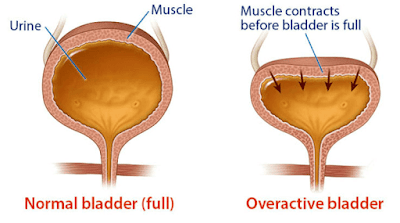The bladder is an organ located in the pelvic cavity that stores and discharges urine. Urine is produced by the kidneys, carried to the bladder by the ureters, and discharged from the bladder through the urethra. Bladder cancer accounts for approximately 90% of cancers of the urinary tract (renal pelvis, ureters, bladder, urethra).
Types
Bladder cancer usually originates in the bladder lining, which consists of a mucous layer of surface cells that expand and deflate (transitional epithelial cells), smooth muscle, and a fibrous layer. Tumors are categorized as low-stage (superficial) or high-stage (muscle invasive).
Bladder cancer usually originates in the bladder lining, which consists of a mucous layer of surface cells that expand and deflate (transitional epithelial cells), smooth muscle, and a fibrous layer. Tumors are categorized as low-stage (superficial) or high-stage (muscle invasive).
In industrialized countries (e.g., United States, Canada, France), more than 90% of cases originate in the transitional epithelial cells (called transitional cell carcinoma; TCC). In developing countries, 75% of cases are squamous cell carcinomas caused by Schistosoma haematobium (parasitic organism) infection. Rare types of bladder cancer include small cell carcinoma, carcinosarcoma, primary lymphoma, and sarcoma.
Incidence and Prevalence
According to the National Cancer Institute, the highest incidence of bladder cancer occurs in industrialized countries such as the United States, Canada, and France. Incidence is lowest in Asia and South America, where it is about 70% lower than in the United States.
Incidence of bladder cancer increases with age. People over the age of 70 develop the disease 2 to 3 times more often than those aged 55-69 and 15 to 20 times more often than those aged 30-54.
Bladder cancer is 2 to 3 times more common in men. In the United States, approximately 38,000 men and 15,000 women are diagnosed with the disease each year. Bladder cancer is the fourth most common type of cancer in men and the eighth most common type in women. The disease is more prevalent in Caucasians than in African Americans and Hispanics.
In people with an overactive bladder (OAB), the layered, smooth muscle that surrounds the bladder (detrusor muscle) contracts spastically, sometimes without a known cause, which results in sustained, high bladder pressure and the urgent need to urinate (called urgency). Normally, the detrusor muscle contracts and relaxes in response to the volume of urine in the bladder and the initiation of urination.
People with OAB often experience urgency at inconvenient and unpredictable times and sometimes lose control before reaching a toilet. Thus, overactive bladder interferes with work, daily routine, intimacy and sexual function; causes embarrassment; and can diminish self-esteem and quality of life.
Urination
Urination (micturition) involves processes within the urinary tract and the brain. The slight need to urinate is sensed when urine volume reaches about one-half of the bladder's capacity. The brain suppresses this need until a person initiates urination.
Once urination has been initiated, the nervous system signals the detrusor muscle to contract into a funnel shape and expel urine. Pressure in the bladder increases and the detrusor muscle remains contracted until the bladder empties. Once empty, pressure falls and the bladder relaxes and resumes its normal shape.
Incidence and Prevalence
Overactive bladder affects men and women equally. The U.S. Department of Health and Human Services has reported that approximately 13 million people in the United States suffer from OAB and other forms of incontinence.
Overactive Bladder
In people with an overactive bladder (OAB), the layered, smooth muscle that surrounds the bladder (detrusor muscle) contracts spastically, sometimes without a known cause, which results in sustained, high bladder pressure and the urgent need to urinate (called urgency). Normally, the detrusor muscle contracts and relaxes in response to the volume of urine in the bladder and the initiation of urination.
People with OAB often experience urgency at inconvenient and unpredictable times and sometimes lose control before reaching a toilet. Thus, overactive bladder interferes with work, daily routine, intimacy and sexual function; causes embarrassment; and can diminish self-esteem and quality of life.
Urination
Urination (micturition) involves processes within the urinary tract and the brain. The slight need to urinate is sensed when urine volume reaches about one-half of the bladder's capacity. The brain suppresses this need until a person initiates urination.
Once urination has been initiated, the nervous system signals the detrusor muscle to contract into a funnel shape and expel urine. Pressure in the bladder increases and the detrusor muscle remains contracted until the bladder empties. Once empty, pressure falls and the bladder relaxes and resumes its normal shape.
Incidence and Prevalence
Overactive bladder affects men and women equally. The U.S. Department of Health and Human Services has reported that approximately 13 million people in the United States suffer from OAB and other forms of incontinence.


0 yorum:
Yorum Gönder